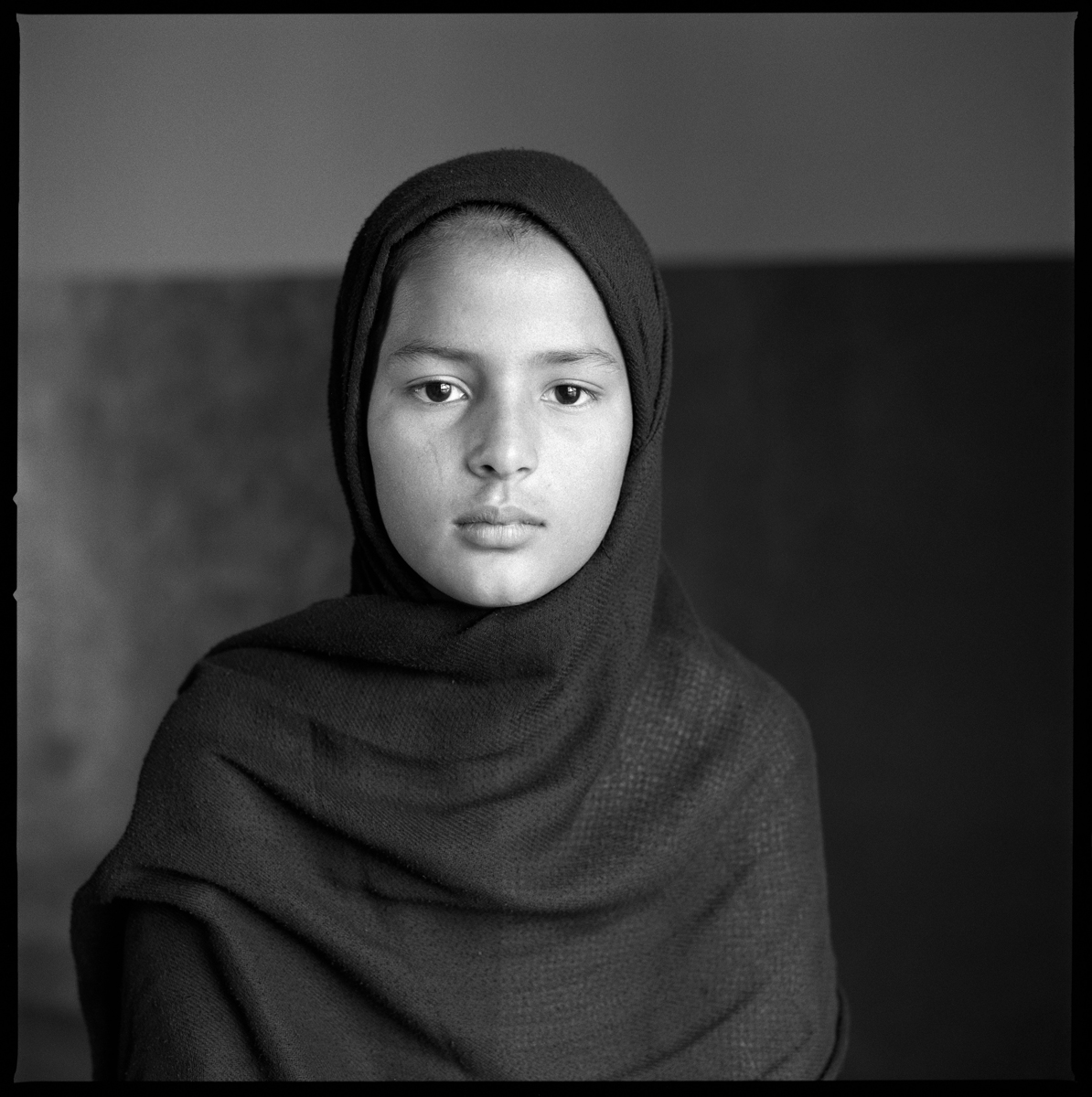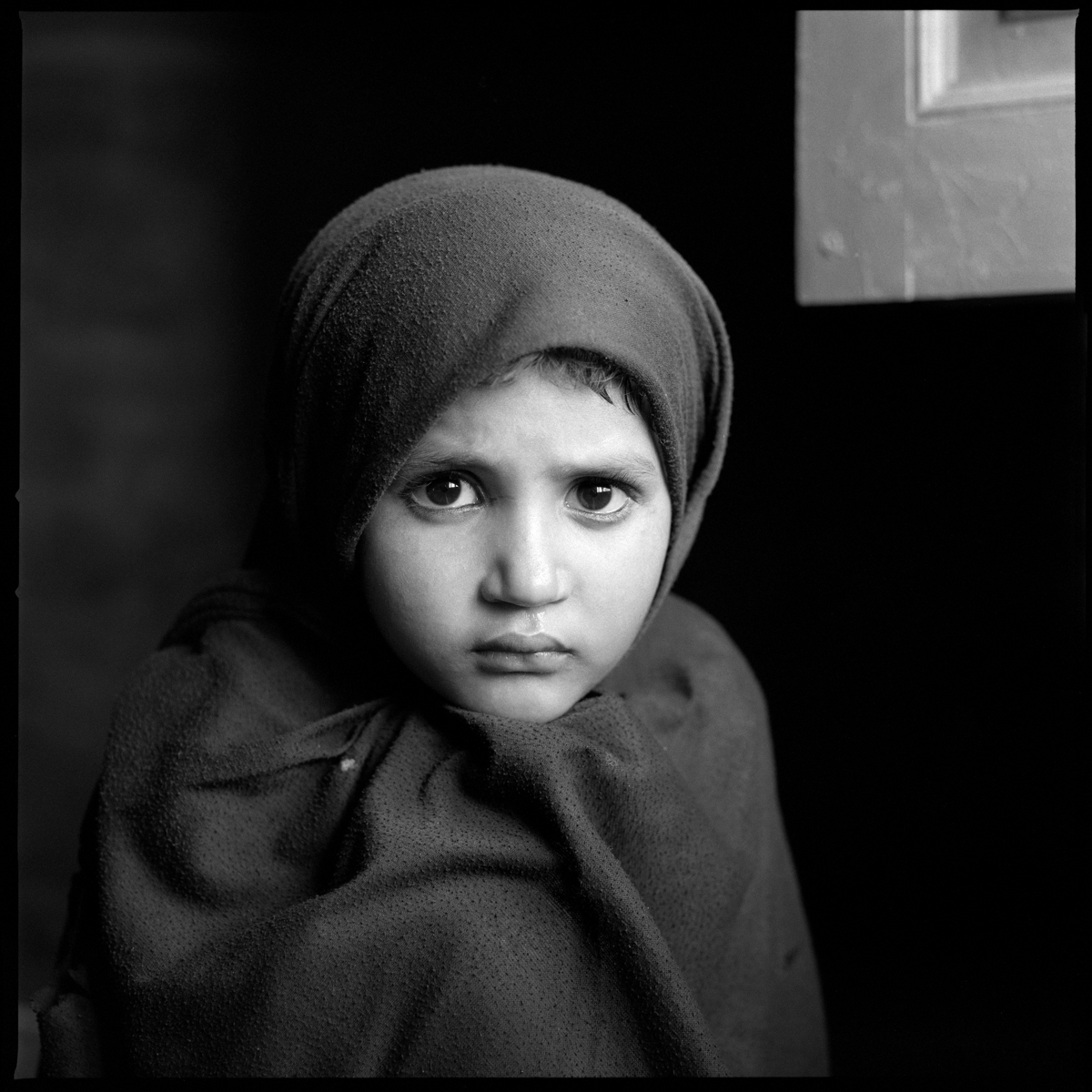Faces Of Hope Posted On 21st March 2023 To Magazine, Stories & Portrait

'What are you doing?'
After 25 years it still catches me off guard. Because my work happens in public spaces, the answer comes often and without pause. Men walking by the scene will change direction and make their way to within a meter of my tripod. While to me it is evidently clear, to the viewers it is understandably strange. For my portraits of girls in rural India, this is supremely true. To set the scene, we are using medium format gear mounted on a tripod, speaking with the children being photographed and under the supervision of the headmasters. Still the men come, and the question repeats itself. Putting myself in their shoes, we ask the men if they would be willing to wait until we finish, and the result is a group of men having tea at the end of the session. It's normally a pleasant talk, and in the end they understand that we are working with the headmasters of the schools to help develop their educational program. The photographs are being made in order to educate the public and raise the necessary funds.
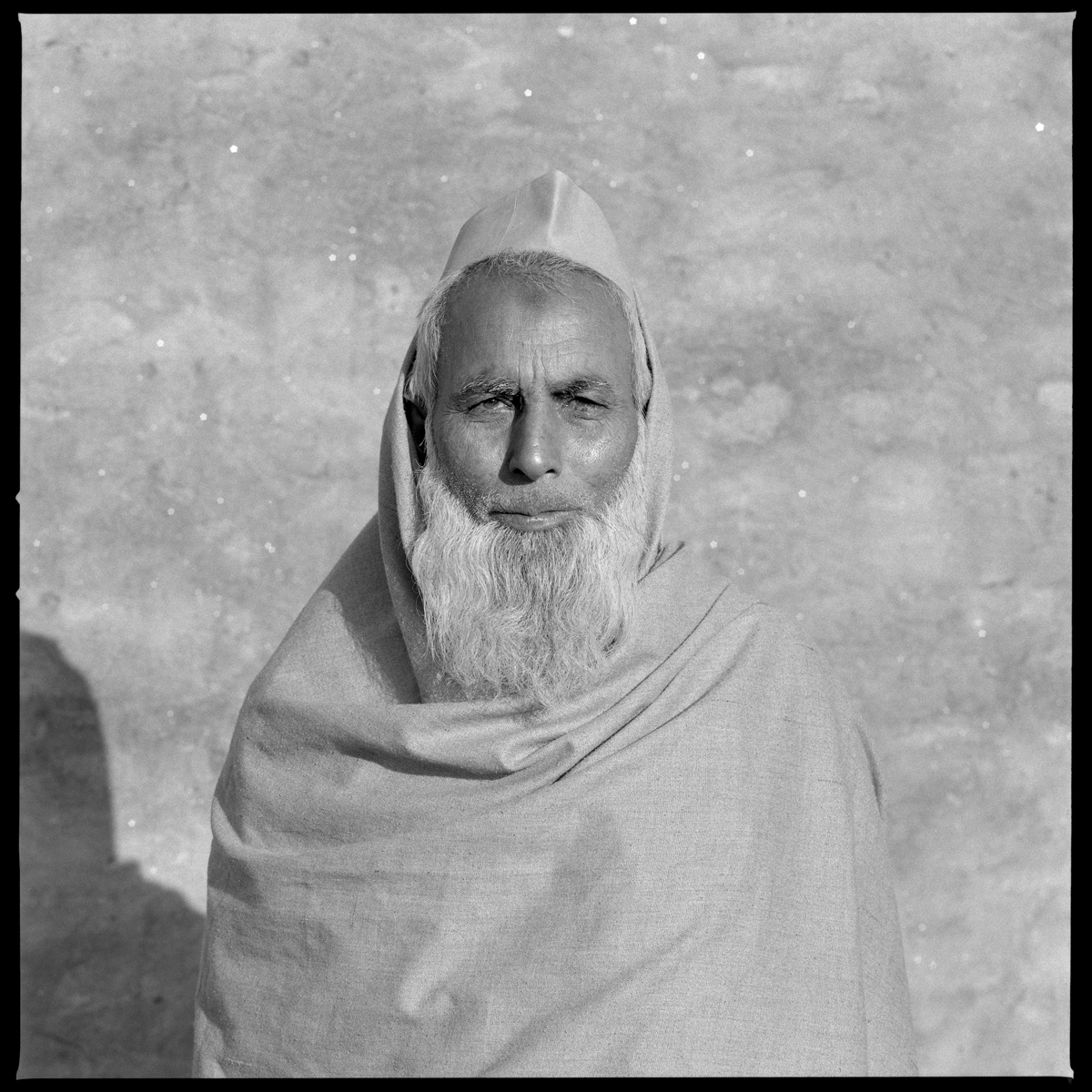
HP5+
After the 'what,' comes the 'why.'
In 2013, religious leaders invited me to document the aftermath of riots in Muzaffarnagar, where over 100,000 people were forced to leave their homes. With a total lack of government action, the local community took it upon itself to help those affected. They donated their lands, as well as organized necessary supplies. That first year, we walked through the encampments and recorded the stories, both through photography and interviews.
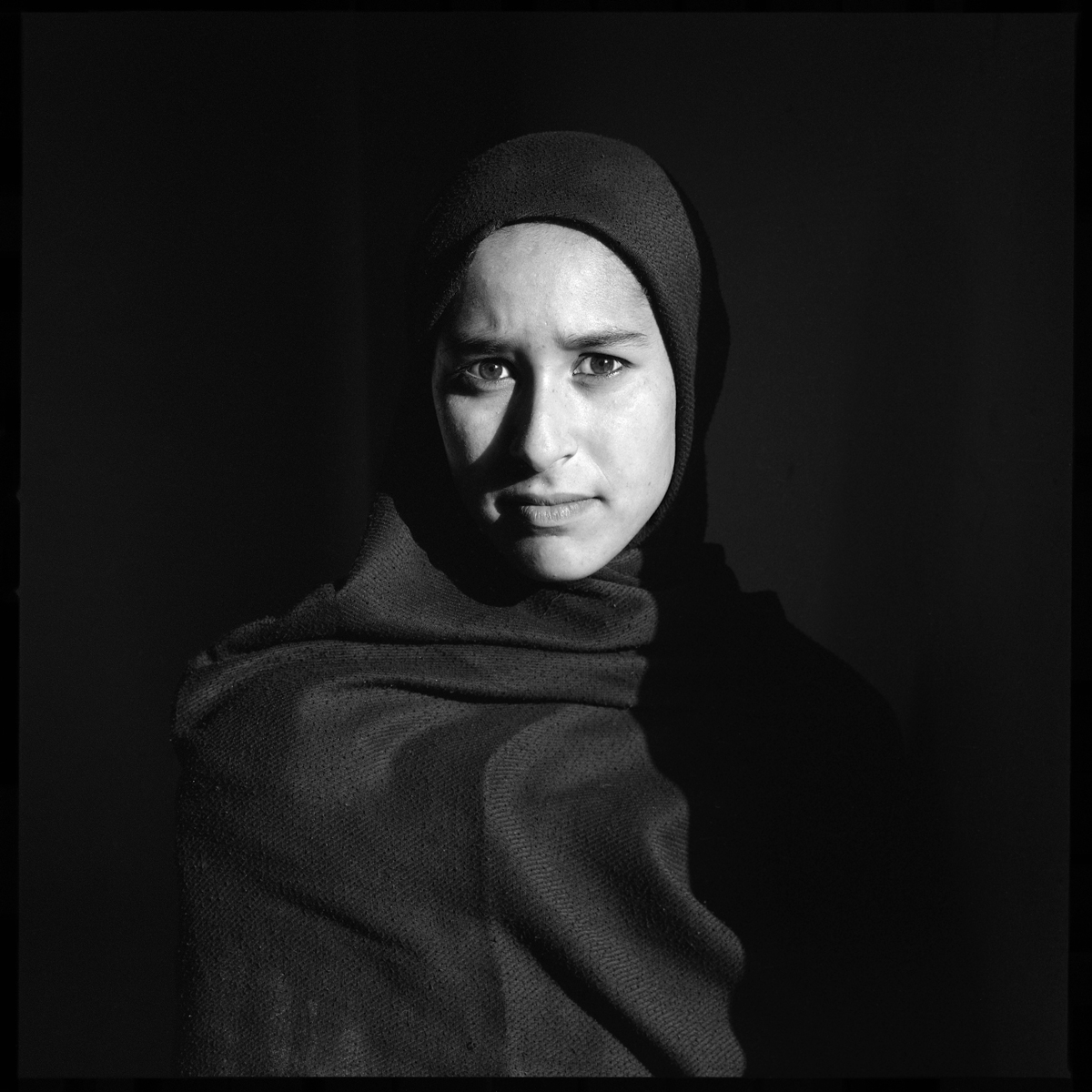
DELTA 100
Shared Hope
Since then, a close relationship has developed with the villages and their religious schools, or madrasas. We were invited by the headmasters, and began to photograph the students. The shared hope was that the photography would highlight the needs of the madrasas. While the headmasters were confident with the religious classes, they knew that there was a need to further develop a fuller curriculum for the sake of the children. This is especially true in this region, where parents lack confidence in the government system and children are sent to the madrasas instead. This results in less than 33% of girls attending the public/private school system, and in girls seeing the end of their education before their teen years.
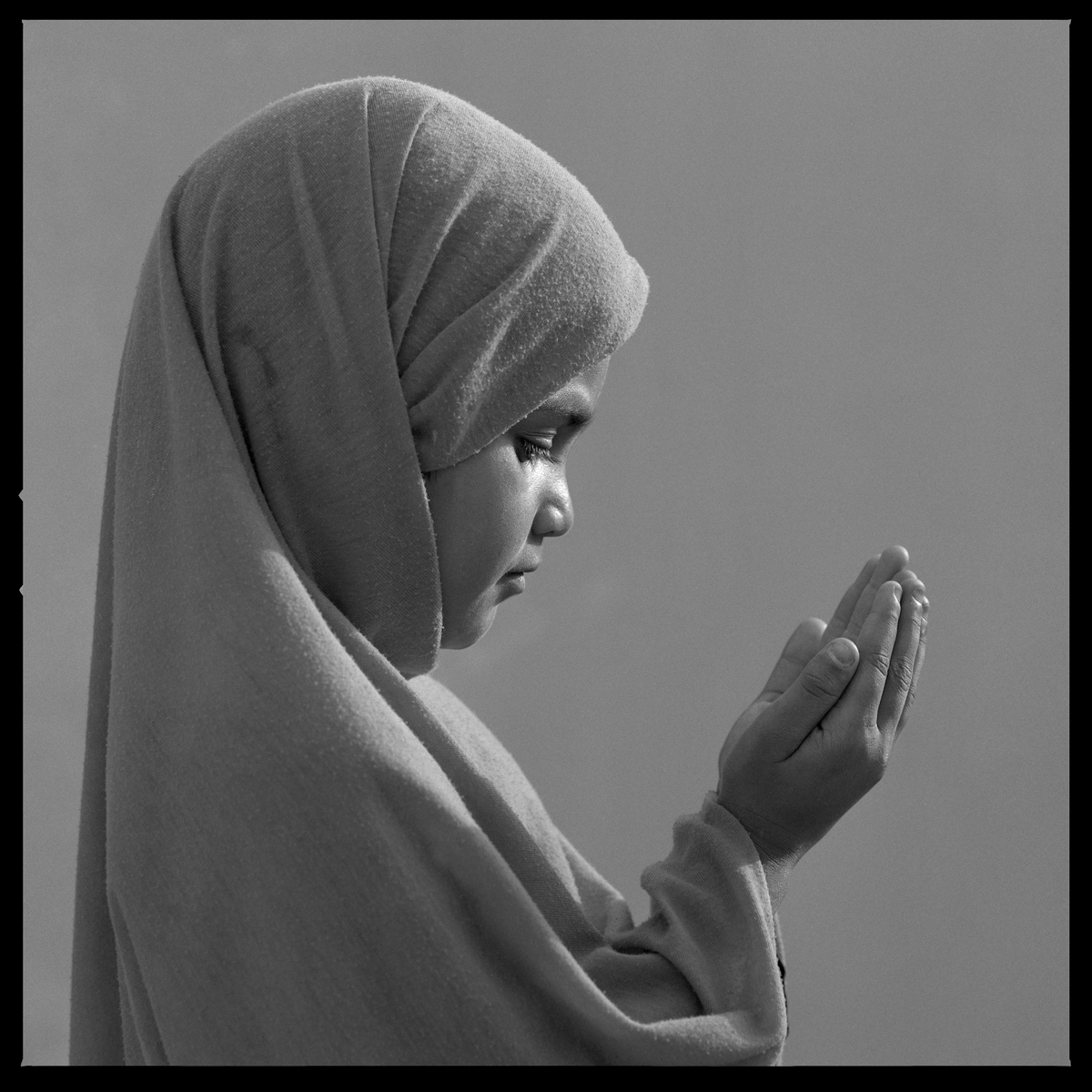
FP4+
Through These Portraits
Presently we have finished our research, and are in the process of developing an educational plan with the guidance of the headmasters. With a plan and a budget in hand, we will approach interested parties and begin the work in earnest. This is the least that can be done for the children, as they have given of themselves beyond measure through these portraits.
- DELTA 400
- DELTA 400
How
Whenever possible, speaking the same language is a tremendous help. A close second is to arrive with familiar faces. My affinity for community development leads to collaborations with foundations, documenting the important work being done as well as the communities being served. With these portraits, visiting the schools in advance and introducing ourselves helps everyone feel more comfortable. While photographing a classroom, having the teacher speak with their students during the process is a game changer. Then there are the friends of the person being photographed, who during the making of the portrait encourage their friends through smiles and soft laughter.
We normally use the first or last hour of the day for direct portraiture, and arriving well before the session eases the transition. Most portraits are made with medium format gear on a tripod, and the students take their turns stepping forward. The sun is to the side of the person, so as to minimize the discomfort. Those with clear eyes are asked to be photographed first, and also those with deeper facial features, so as to minimize the shadows. Once direct light turns harsh, we move to working with windows.
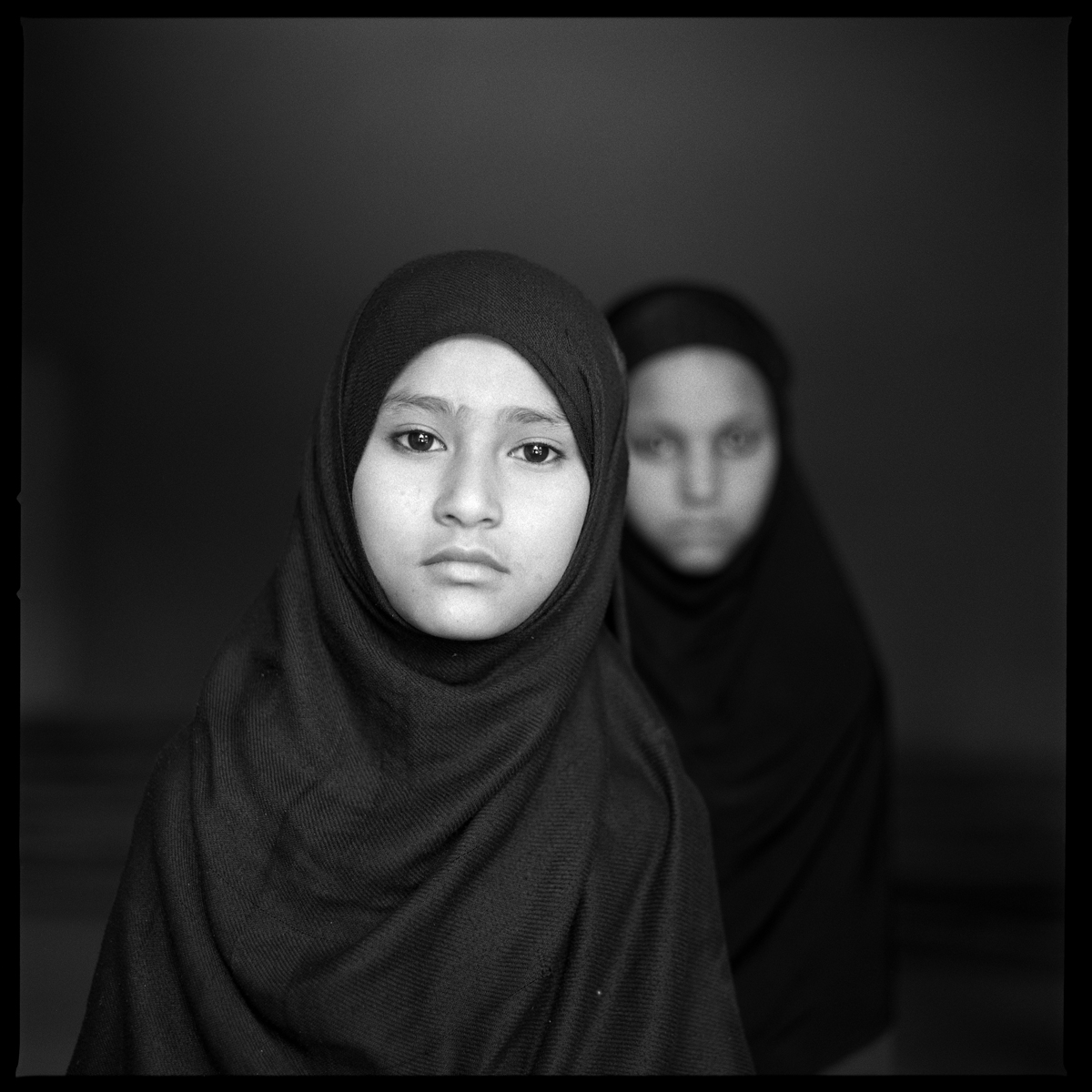
DELTA 400
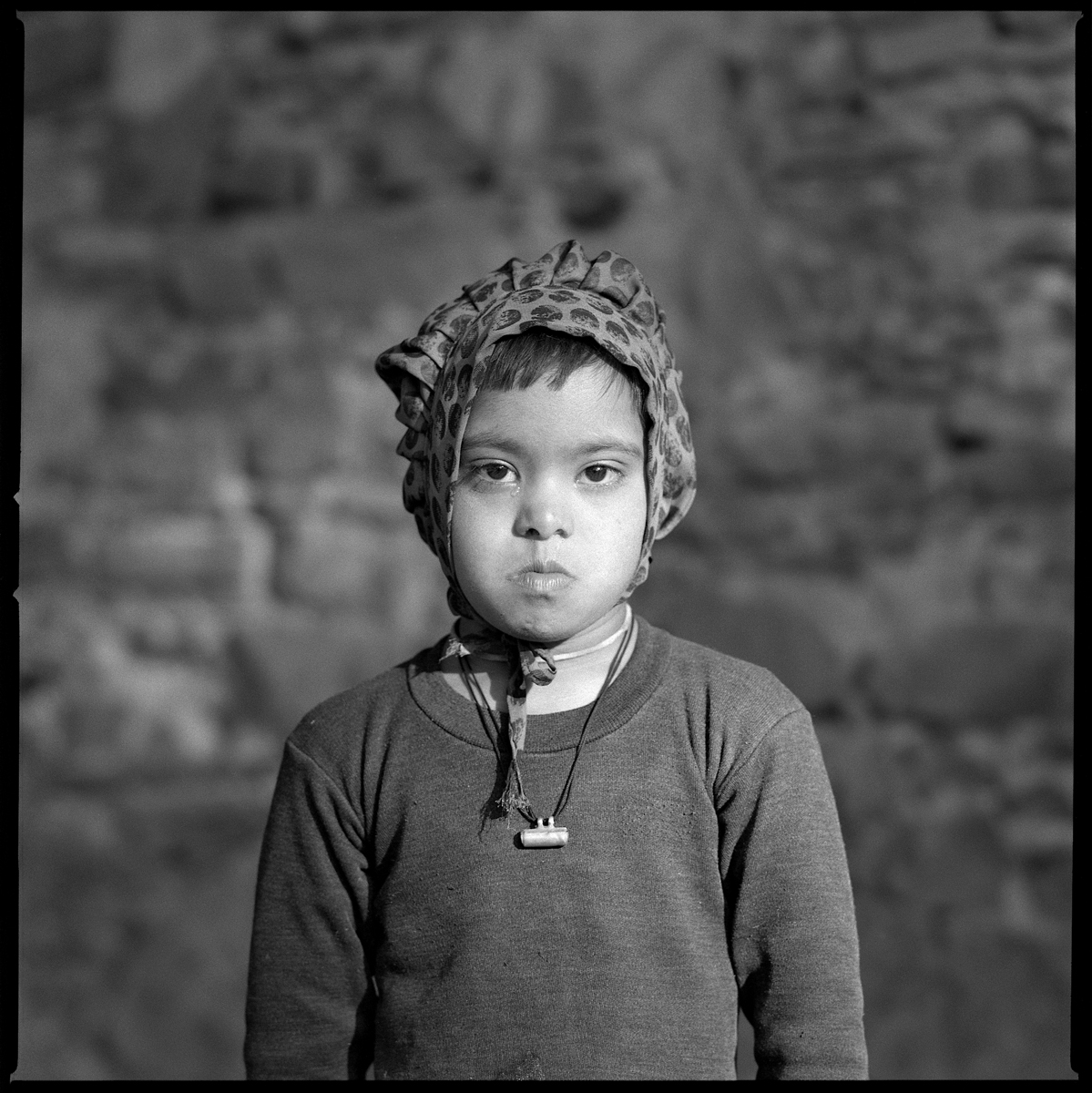
HP5+
Where
While my photography concentrates on a seemingly unconnected group of countries, the path has formed naturally through conversations with friends. Regardless of location, my preference is for the rural communities. Life in the villages has a pace which helps with communication, and engenders the goodwill necessary to help everyone feel comfortable. While the list of countries is familiar to travelers, the communities are off the beaten path. As a result, curiosity in all is heightened, leading to spontaneous moments and a more natural exchange. This series of portraits was made in various religious schools located in the District of Shamli, Uttar Pradesh.
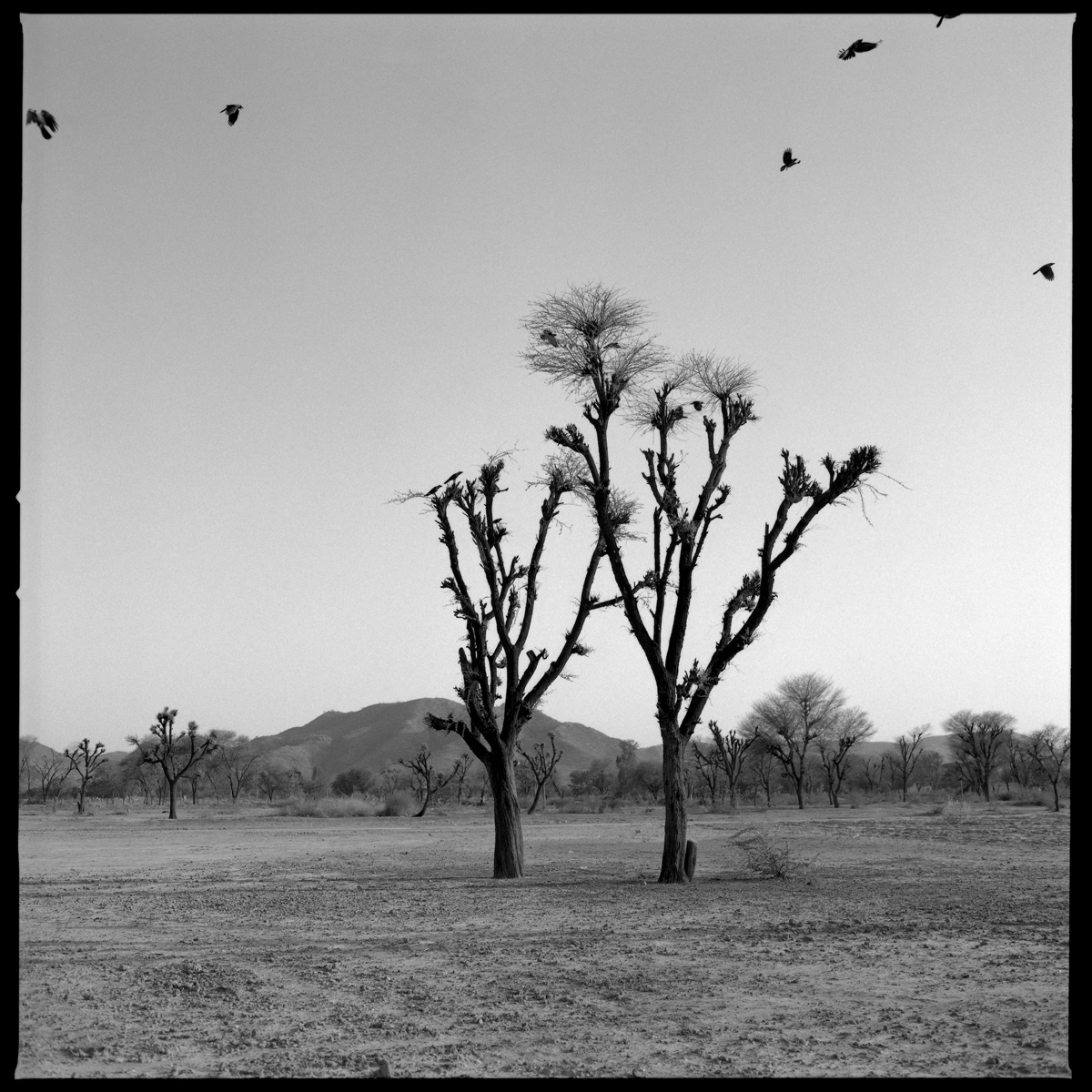
DELTA 100
When
Timing depends on the country, and its weather. Normally my work occurs during the sunniest months, as my portraits are exclusively made with natural light. For images with direct sunlight, the first or last hour of the day is chosen. In between these times, portraits with window light are produced. When the driest time also happens to be winter, the added bonus is a low arch of sun throughout the day. This extends the times in the mornings and evenings. While reducing shadows under the eyes and nose, the low sun also provides beautifully long shadows in the backgrounds.
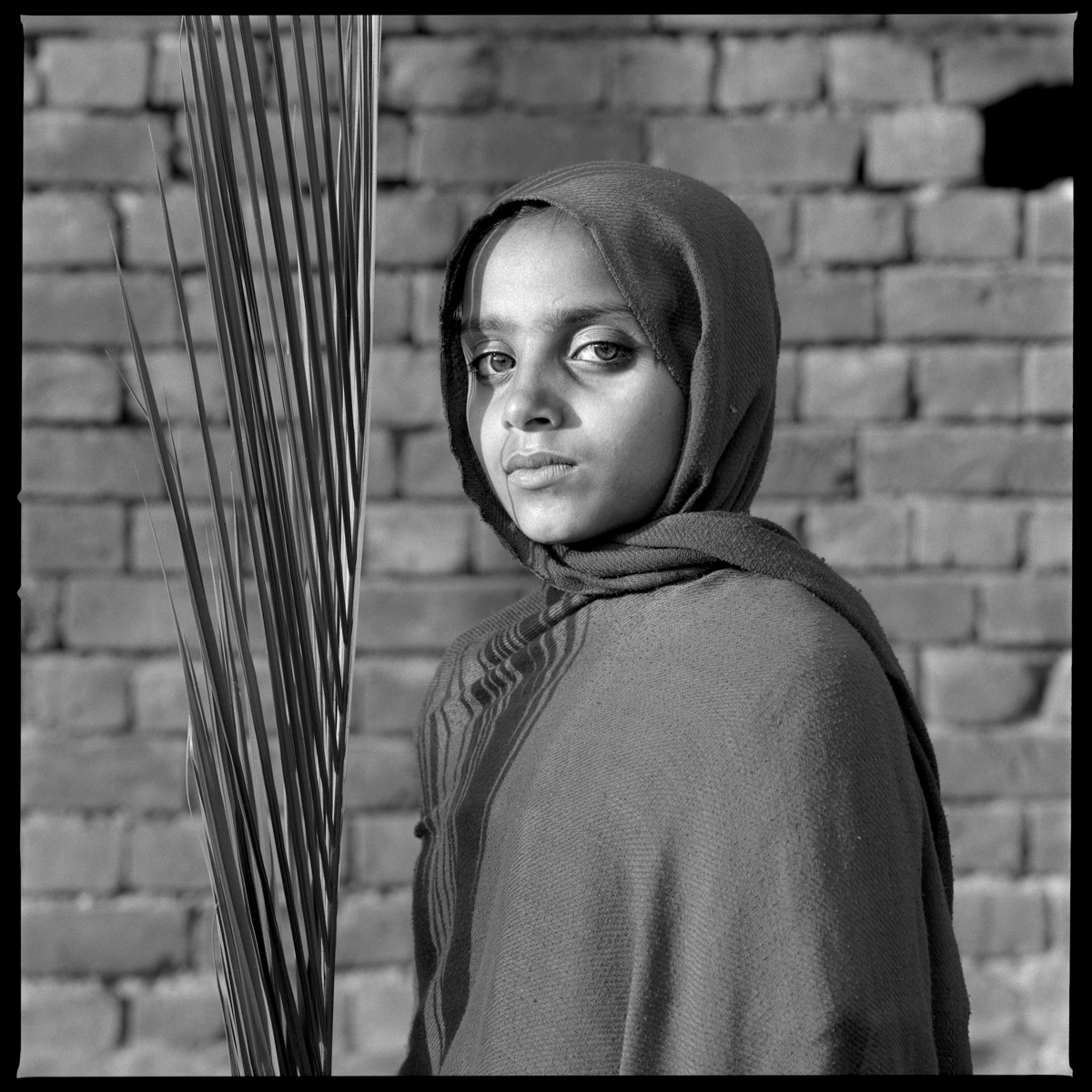
HP5+
Technical Information
- Hasselblad 501C/M
- Zeiss 180mm CF
- Zeiss 100mm C
- Gitzo Series 5
- Arca-Swiss B1
- Delta 100
- Delta 400
- HP5+
- FP4+
- ILFORD MGIVWTFB
- Multigrade Developer
- Stop Bath
- Rapid Fixer
Images scanned via Epson V850
Film processed by David Lingua @ www.dodgechrome.com
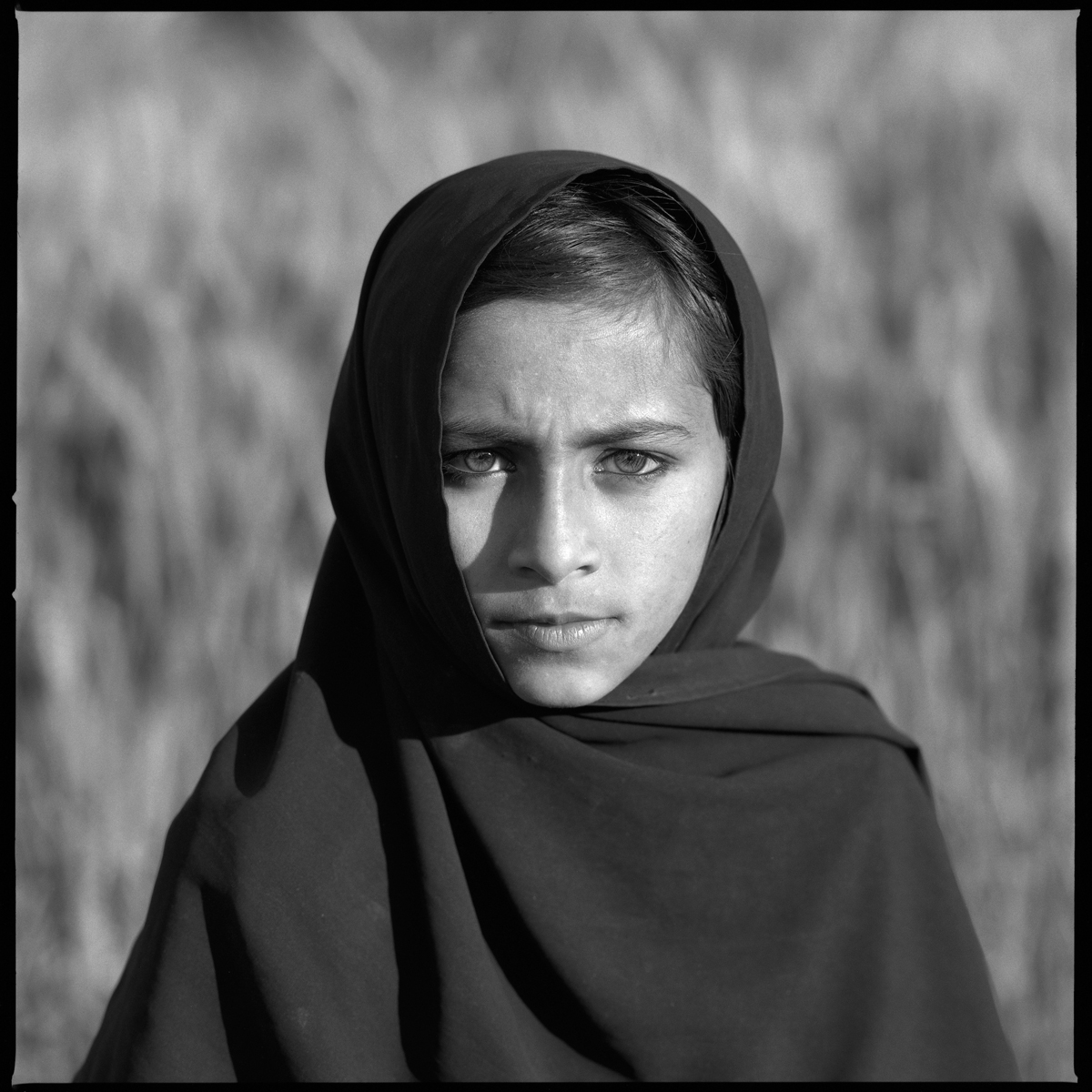
DELTA 100
©Halim Antonio Ina
About The Author

Halim Antonio Ina
Halim Antonio Ina, Jr. was born in Managua, Nicaragua on June 17th, 1968 to parents of Lebanese descent. At the age of 5 and as a result of an earthquake, his family left for their ancestral home and lived in Zahle, Lebanon for the next five years. At the age of 10 his family left for the United States due to the hostilities associated with the Lebanese Civil War beginning in 1975.
From his birth through his formal university education, he adhered to the principles laid down by his upbringing, following through with his training as a dentist and establishing a dental clinic. It is when he was instructed to purchase a camera for the documentation of his professional work that his passion for the image was discovered. This, coupled with visits to his childhood home, allowed him to have access to people from his imagination. Thus the photographer was born within the professional.
He proceeded to travel around the world, documenting the people in his path as an anthropologist takes notes. It was his time in India that transformed his photography. While working with a foundation in Old Delhi, he was shown to an alley. It was in this small space that he realized the potential for his work, the use of photography to promote for a more just world.
From this point forward, he uses his photography as a tool for raising awareness. His images are displayed and printed in order to show the public the good works being done in the various communities, in order to gain funding for the projects from which the very subjects in his portraits benefit. The portraits in this series represent communities in Utter Pradesh and Rajasthan, and support sewing centers as well as educational development within rural, religious schools.







